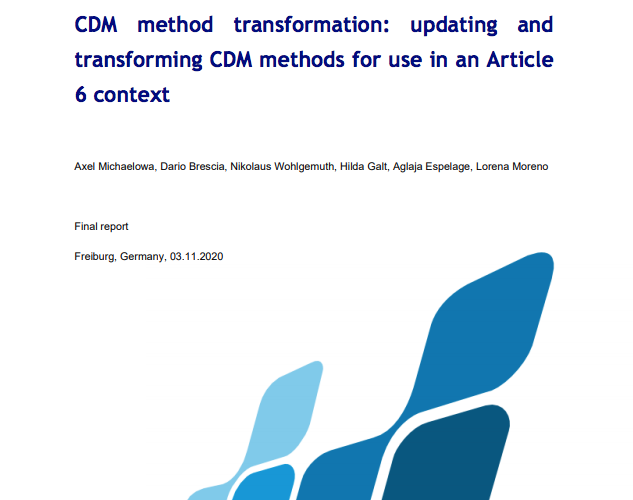Carbon methodologies define how to determine the greenhouse gas impact of climate mitigation activities. This includes setting the crediting baselines, testing additionality, and outlining how to monitor and quantify emission reductions. Under the Clean Development Mechanism (CDM) more than 200 crediting methodologies have been approved. These methodologies are often used as a starting point in piloting market activities in the context of Article 6 of the Paris Agreement, which allows countries to cooperate to achieve their greenhouse gas mitigation targets.
At this stage, it is unclear to what extent CDM methodologies will be formally transitioned to the Article 6 mechanisms. This paper, developed for the Swedish Energy Agency, evaluates the appropriateness of selected CDM methodologies for use under Article 6. It finds that all methodologies evaluated will need to be adapted to get ‘fit-for-Paris’.
This includes the following recommendations:
- Additionality tests will need to be reformed to include a link to existing policies and regulations, and methodologies should consider a link to the host country’s Nationally Determined Contribution.
- Crediting baselines will need to result in below business as usual crediting of emission reductions.
- Methodologies will need to be designed to increase stringency over time while preserving investment security.
- CDM methodologies generally do not consider the Sustainable Development Goals while under Article 6, cooperating Parties may wish to see stronger consideration of sustainable development in activity design and monitoring, reporting and verification of impacts.
As most revision needs are cross-cutting, the study recommends developing overarching guidance to revise existing methodologies, rather than revising CDM methodologies on a case-by-case basis.




